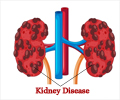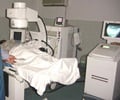New research indicates that automated laboratory reporting of kidney function tests was associated with a significant increase in first-time visits to a kidney specialist.
New research indicates that automated laboratory reporting of kidney function tests was associated with a significant increase in first-time visits to a kidney specialist. This was true particularly among those at increased risk of late detection of kidney disease (such as older or female patients), according to a study in the March 24/31 issue of JAMA.
Chronic kidney disease (CKD) is common and is associated with an increased risk for illness, death and substantial health care costs. "Early recognition of CKD is advocated on the premise that timely implementation of lifestyle and pharmacological interventions can prevent or slow the progression of CKD and reduce the incidence of cardiovascular disease," the most common cause of death among patients with kidney disease, according to the authors. "One strategy to increase recognition of CKD is use of automated laboratory reporting of estimated GFR." They add that although there may be benefits of this reporting, there are concerns about potential unintended negative effects (mislabeling of mild CKD and overwhelming limited health care resources), and that despite lack of evidence, automated reporting of estimated GFR is widely used.Brenda R. Hemmelgarn, M.D., Ph.D., of the University of Calgary, Canada, and colleagues evaluated the association of estimated GFR reporting with nephrologist (kidney specialist) visits, health care resource use, and management of patients with CKD. The community-based study included 1,135,968 participants, who were identified from a laboratory database in Alberta, Canada, and followed up from May 2003 to March 2007 (with estimated GFR reporting implemented October 2004).
After a 3-month transition period following estimated GFR reporting, the rate of first outpatient visits to a nephrologist for patients with CKD (estimated GFR less than 60 mL/min/1.73 m2) increased significantly, corresponding to a relative increase from the beginning of the study of 68 percent. This rate of increase was even greater for participants with estimated GFR of less than 30 mL/min/1.73 m2, the group for whom current clinical practice guidelines emphasize the value of timely nephrological referral. For these patients, women experienced a greater increase in the rate of first visits to a nephrologist, while there was no increase for men, and the increase was predominantly seen in patients ages 46 to 65 and those 86 years or older, as well as those with hypertension, diabetes, and other co-existing illnesses.
Among patients without CKD, there was no association between estimated GFR reporting and rate of first outpatient nephrologist visits. The rate of all outpatient nephrologist visits for patients with CKD following estimated GFR reporting (including visits among individuals with and without prior nephrologist visits) also increased significantly.
"Reporting of estimated GFR was not associated with increased rates of internal medicine or general practitioner visits or increased use of angiotensin-converting enzyme inhibitors/angiotensin II receptor blockers among patients with CKD and proteinuria or the subgroup limited to patients with diabetes," the authors write. However, referral of participants at increased risk of late detection of CKD and who may benefit most from specialized care, such as patients with more severe kidney dysfunction, older or female patients, did increase significantly.
"The association with estimated GFR reporting and long-term patient outcomes, as well as economic consequences, remains to be determined."(JAMA. 2010;303[12]:1151-1158. Available pre-embargo to the media at www.jamamedia.org)
Advertisement
Editorial: Referrals for Chronic Kidney Disease - Real Problem or Nuisance?
Advertisement
"The current estimated GFR-dominant formulation for defining and classifying generic CKD requires an urgent overhaul, routine reporting of estimated GFR needs reconsideration (regardless of the formula used), and primary care physicians and nephrologists should work together to ensure that referrals for subspecialty care are timely and appropriate. Suggestions for revision of the existing framework for diagnosing CKD that take into account age and sex have been made, and division of stage 3 CKD into subcomponents of higher or lower estimated GFR is already practiced in many countries. New schema that incorporate levels of albumin excretion in an estimated GFR-based matrix have been advocated and it is likely that existing guidelines will be updated soon. Much work still needs to be done to achieve the proper balance between efficiently identifying the problem of actual CKD and minimizing the nuisance of both mislabeling CKD and unnecessary referral to a subspecialist."
Source-Eurekalert
RAS















